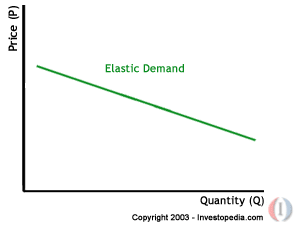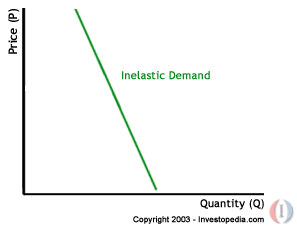The factors that influence the elasticity of a price includes:
- The competition. If there are numerous companies producing the same type of product, the price elasticity will increase as the demand from consumers would definitely rise if one company drops its price.
- Needs or wants? Products that fall under the "need" category often have prices that are inelastic as people NEED them and most of the time a little change in the price would not affect the demand of the customers. Whether the price is high or not, there is not much of a choice. However, those products that fall under the "want" category (which are usually luxury goods and services, such as entertainment) are elastic and the demand is dependent on the price. This is because they are not necessary in the daily lives of the consumers and people would only opt for it if the price is relatively low or if they have enough money to spend.
- Loyalists. When consumers love a product so much that they will be 'loyal' to it no matter what the price is, they wouldn't mind spending money on it. Therefore, this will cause the product to have an inelastic price. Examples of this can include technological devices Apple products (iPhones, iPads) or habitual products like cigarettes.

The price elasticity of a product can be calculated using the following formula:
Elasticity = (% change in demand / % change in price)
If the price elasticity is...
- more than one, it is price elastic

- less than one, the price is inelastic

- equals to one, the product is unit elastic. This means that the change in demand is proportionate to the change in price. Every unit of price increase, increase the unit of demand for the good.
- equals to zero, the product's price is perfectly elastic. This means that no matter how much the price changes, the demand for the goods will not change. (Though I think this is almost impossible to find) The demand curve for this type of price will have a vertical line with an undefined gradient)
Works Cited
Investopedia.com. "Economics Basics: Elasticity." Investopedia – Educating the World about Finance. Investopedia.com, 2003. Web. 11 Dec. 2012. <http://www.investopedia.com/university/economics/economics4.asp>.
Tutor2u. "Price Elasticity of Demand." Tutor2u. Tutor2u, n.d. Web. 11 Dec. 2012. <http://www.tutor2u.net/economics/content/topics/elasticity/elastic.htm>.
No comments:
Post a Comment